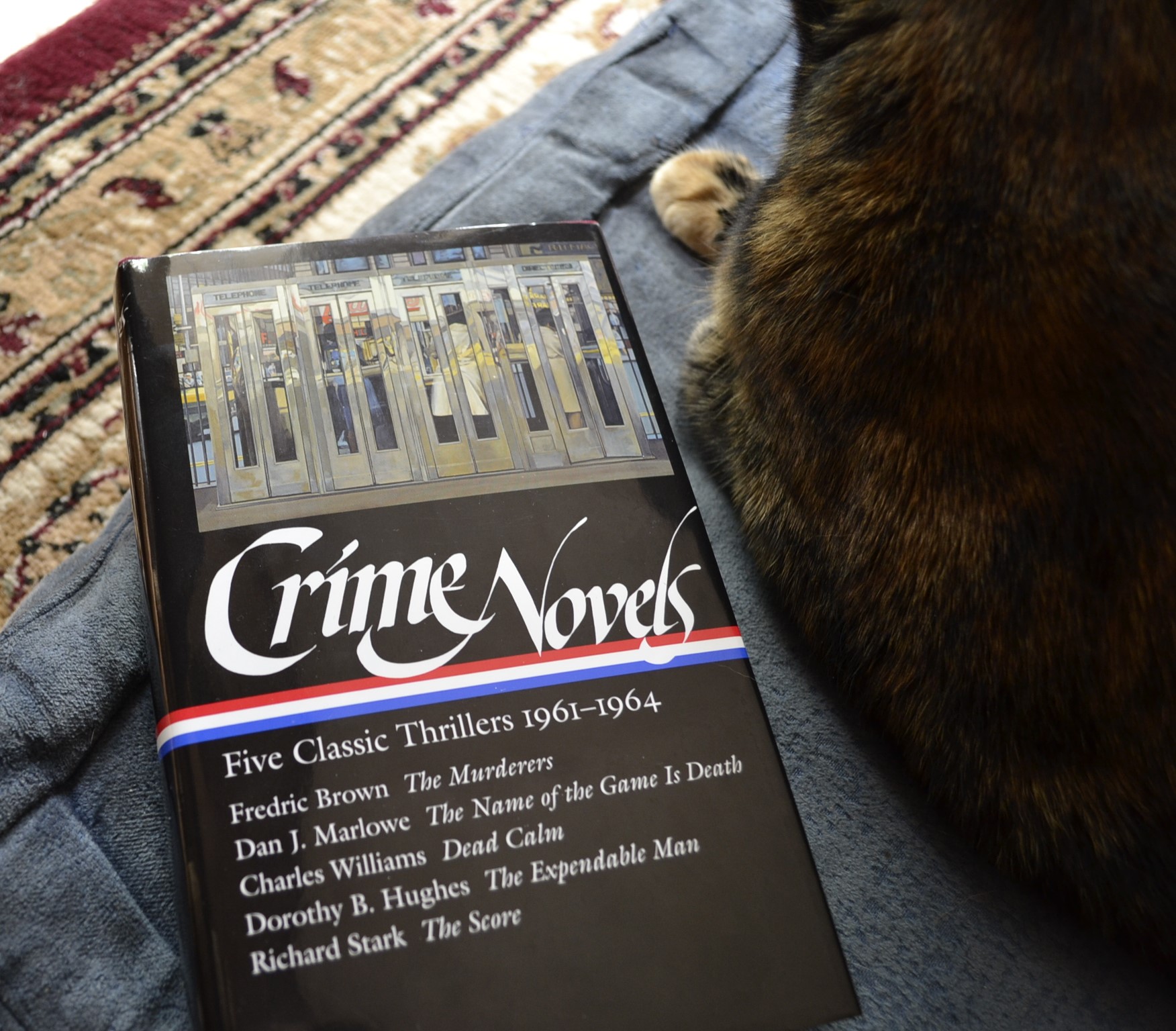The Spooky Reading Begins
Two weeks ago, I went through all my stacks and started fishing out selections both for my August posts (for Halloween in August) and for my October posts (spooky season proper). The stack is pretty tall and I am very much hoping to get through all of them — though past years have taught me that I will have some leftovers to review next year.
I love going through my book stacks, but the best thing of all about gathering the scary literature? Seeing my lovely spouse’s face when she takes a break from work to help me. She loves all things spooky (including all things spooky-cute), and as we hit mid-summer and all of the Halloween décor starts to materialize, she really starts to get that holiday twinkle in her eye.
She still likes to say that, no, the spooky village doesn’t have to come out in August, and, no, we don’t need to start taking down flowers and replacing them with paper bats. But I know her, and there’s nothing I love more in this universe than making her happy. So the décor will start to come out soon and, before I know it, it’s going to be pretty spooky in here.
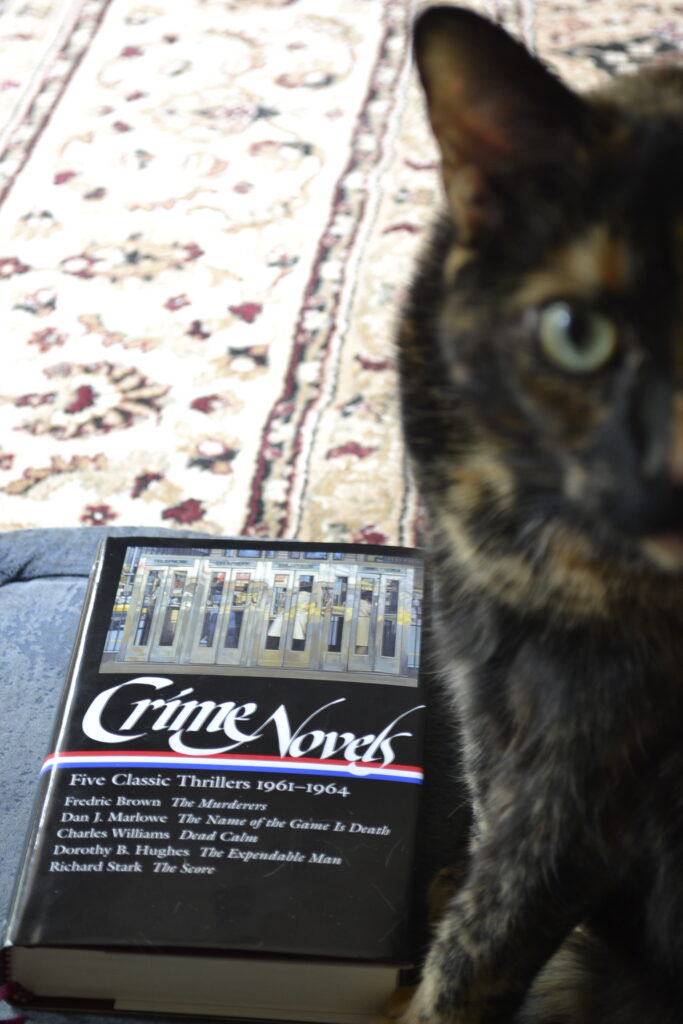
Some Context
As we move from the 1950s and into the 1960s, landscape of noir starts to change. Crime is still very much the defining aspect of the genre, but now we begin to see a shift away from reactions to the suburban dream and towards new criminal enterprises. Readers begin to ask the question — what happens when your job is crime? What happens when people decide to make money ‘the easy way’?
But more than a return to organized crime novels, this is an exploration of characters that might be normal office workers but instead have decided to take a more criminal path — whether that will be marrying a rich mistress after killing her husband, committing a bank robbery, or robbing an entire town at once.
Another emerging front of the genre was the push to create more imaginative scenarios where suddenly the mundane becomes the unhinged. This idea would be built upon later on in the decade, but its origins are here.
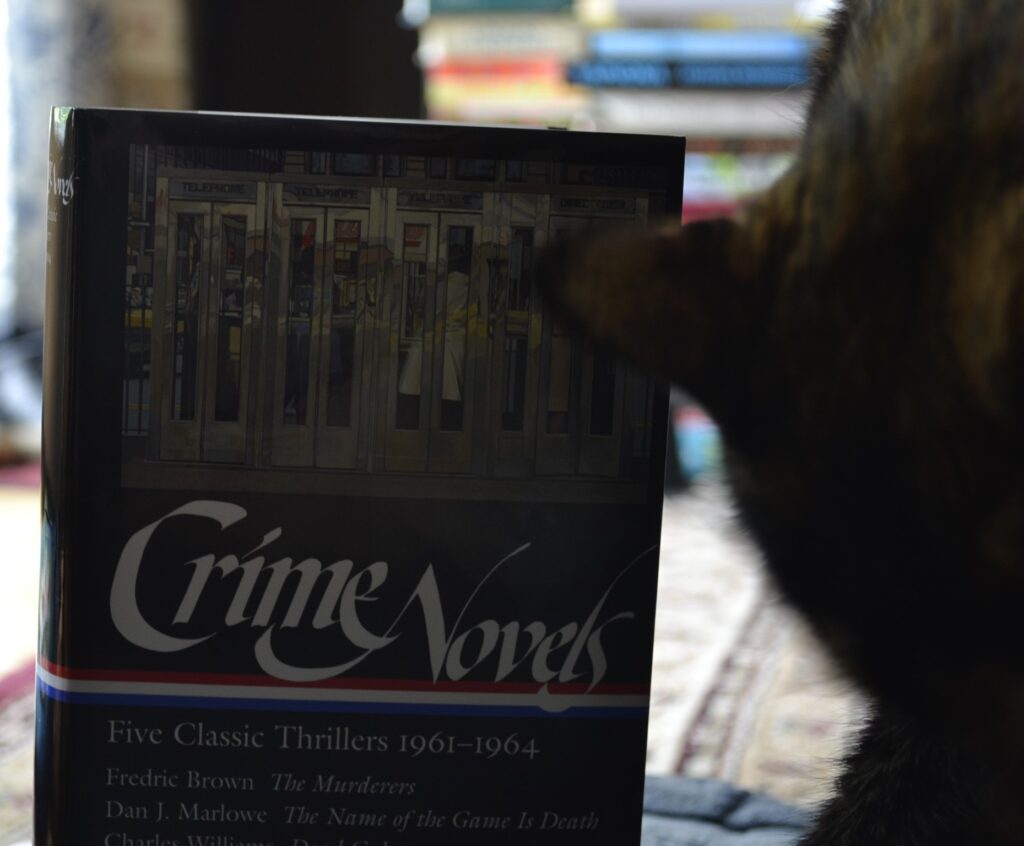
The Books
The Murderers
Fredric Brown’s The Murderers was published in 1961. Willy Griff is a struggling actor and a man that’s very much on the make. His mistress has a husband with money, and Griff wants that money no matter what the cost. What follows is a scheme that seems simple but runs the gambit of complications and twists of fate, before making a final turn towards a masterfully woven conclusion that packs a satisfying punch. I would recommend reading this book is as few sittings as possible in order to get the maximum impact and to make sure you keep all the threads in your immediate memory.
The Name of the Game is Death
The Name of the Game is Death was written by Dan J. Marlowe and published in 1962. This is probably my least favourite of the collection. Mostly because it prominently features the rather graphic death of a beloved pet as the explanation for why the main character has no morals and no empathy. It also takes a strange focus on sexuality as an expression of manhood. That isn’t exactly uncommon in the genre, but Marlowe makes it much more graphic and includes a lot of sexual violence in the narrative. And a very large dose of misogyny as well. The plot? Basically, a bank robber finds out that his partner in crime has met a bad end. But how? And where is his share of the money?
Dead Calm
Charles Williams’ Dead Calm from 1963 is a selection that typifies this decade’s penchant for outlandish scenarios. A newlywed couple is honeymooning on a boat with no one in sight — except when another boat does show up bearing a psychopathic killer who is disguising himself as a victim of horrific circumstances. The truth is discovered, but far too late. It’s a very fast-paced read. Williams knows how to keep the tension maximized right up until the final page. However, be warned that the explanation for the violence seems to rest heavily on women instead of the actual perpetrator. It was very difficult not to hurl this volume at the wall at that point.
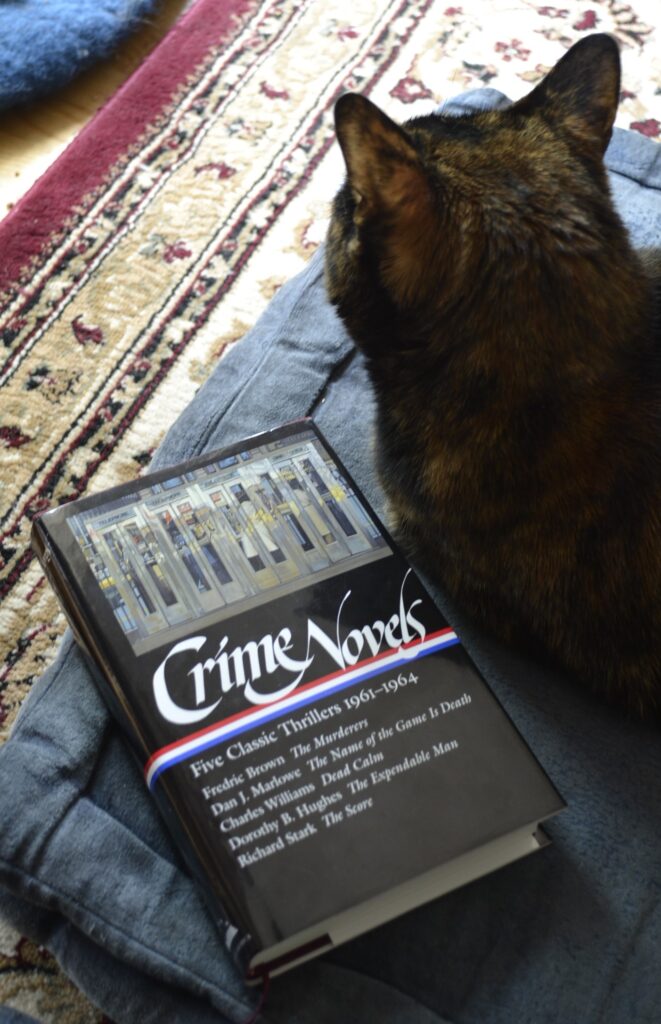
The Expendable Man
Dorothy B. Hughes is the author of 1963’s The Expendable Man, which I didn’t actually manage to get to in this volume. I have a separate edition of it from New York Review of Books that I haven’t quite finished yet, but I will say that so far it’s very good. This is a novel with a very simple and horrifying premise. How far can one bad decision spiral completely out of control? The protagonist simply picks up a hitchhiker and rapidly finds himself in the middle of the chain of events no one could have possibly predicted.
Richard Stark
Richard Stark is probably a name you’ve heard of. Richard Stark is one of Edwin Westlake’s many pseudonyms. He’s the writer of the twenty-four novels featuring Parker, a professional thief. There have been so many films made from these books, some notable ones being Point Blank starring Lee Marvin from 1967 (which I highly recommend), and The Outfit starring Robert Duvall from 1973. If you’d rather stick to books, Darwyn Cooke has adapted several of the Parker novels into graphic novels including The Hunter, and The Score. The art is fantastic and I highly recommend these!
The Score
The Score is about a plot to rob an entire town in the course of one evening and follows Parker, a thief, as he initially agrees to the plan and through all of the steps involved in executing it – including what happens when it all goes to hell. It’s a procedural, just not a police one. Carefully plotted and meticulously executed, The Score is definitely a noir masterpiece.
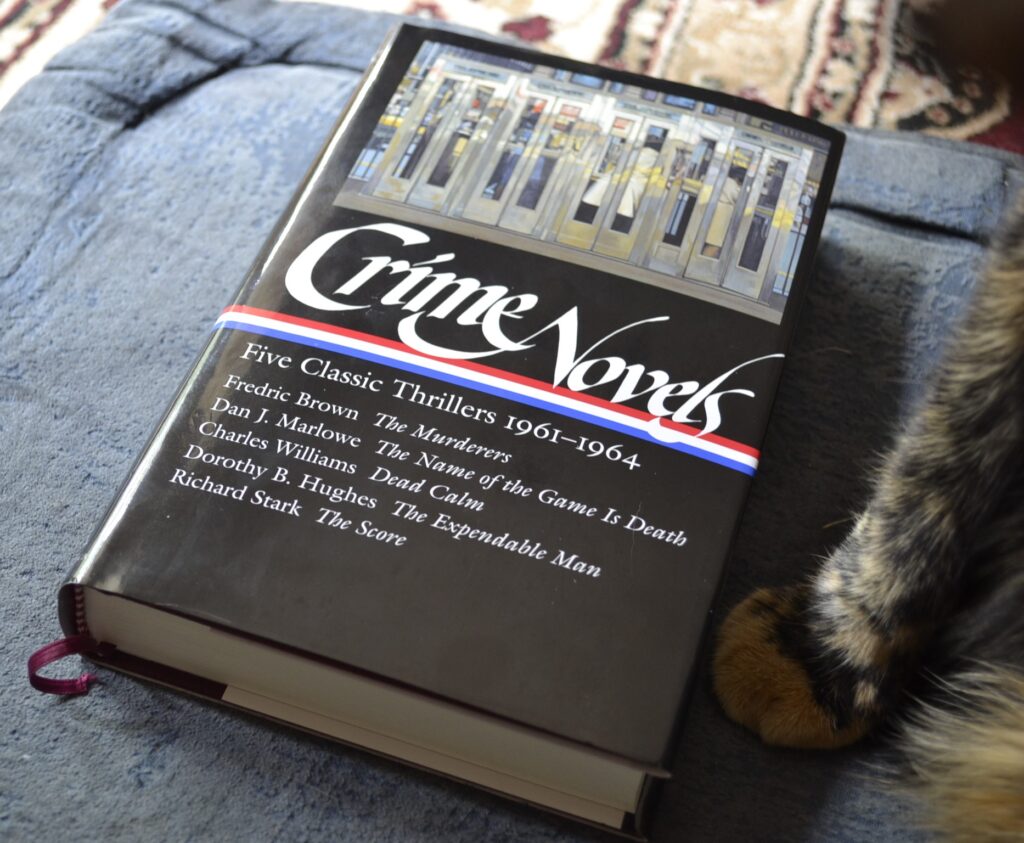
Waiting for Autumn and Some Books
This year, I actually managed to get through a book that’s all about horror paperbacks from the 1970s through the 1980s. I was so happy to be able to order a few that I really wanted to read, and, as we speak, I am waiting for them. Waiting super impatiently.
I know. Shipping takes time, and everything is moving as quickly as it can — but that gap between the actual purchase and when the item actually ships can be so long. At least psychologically.
